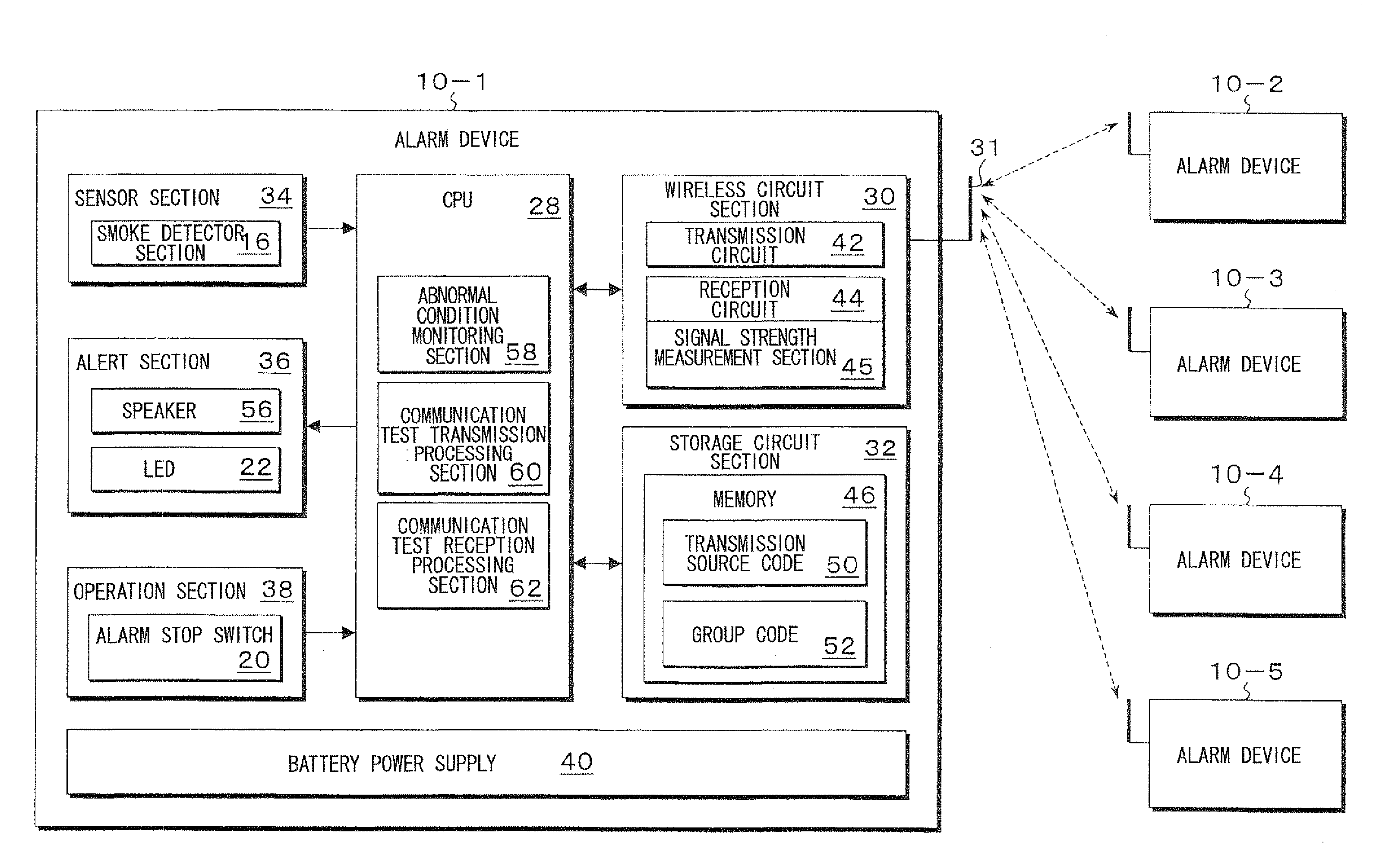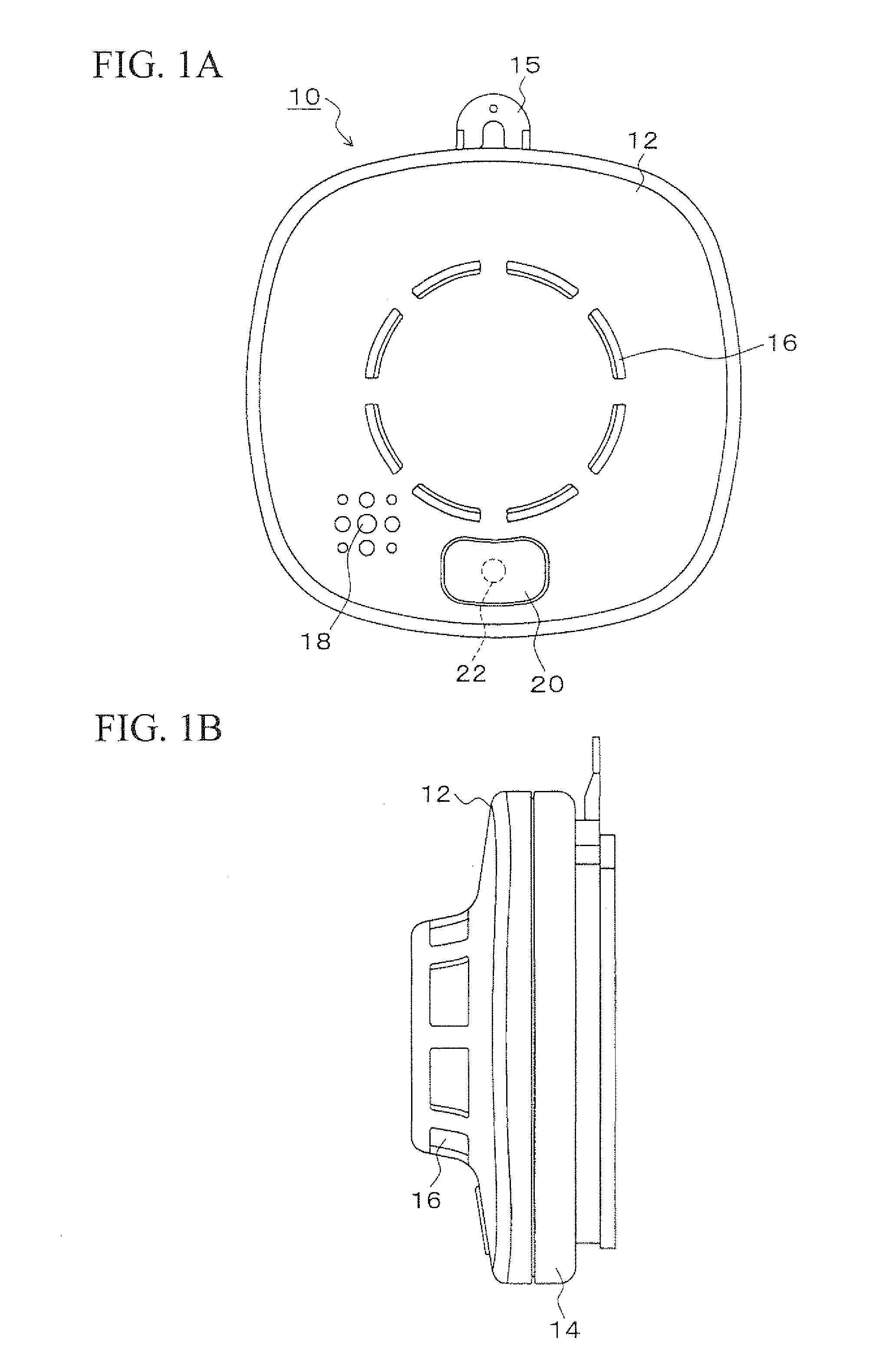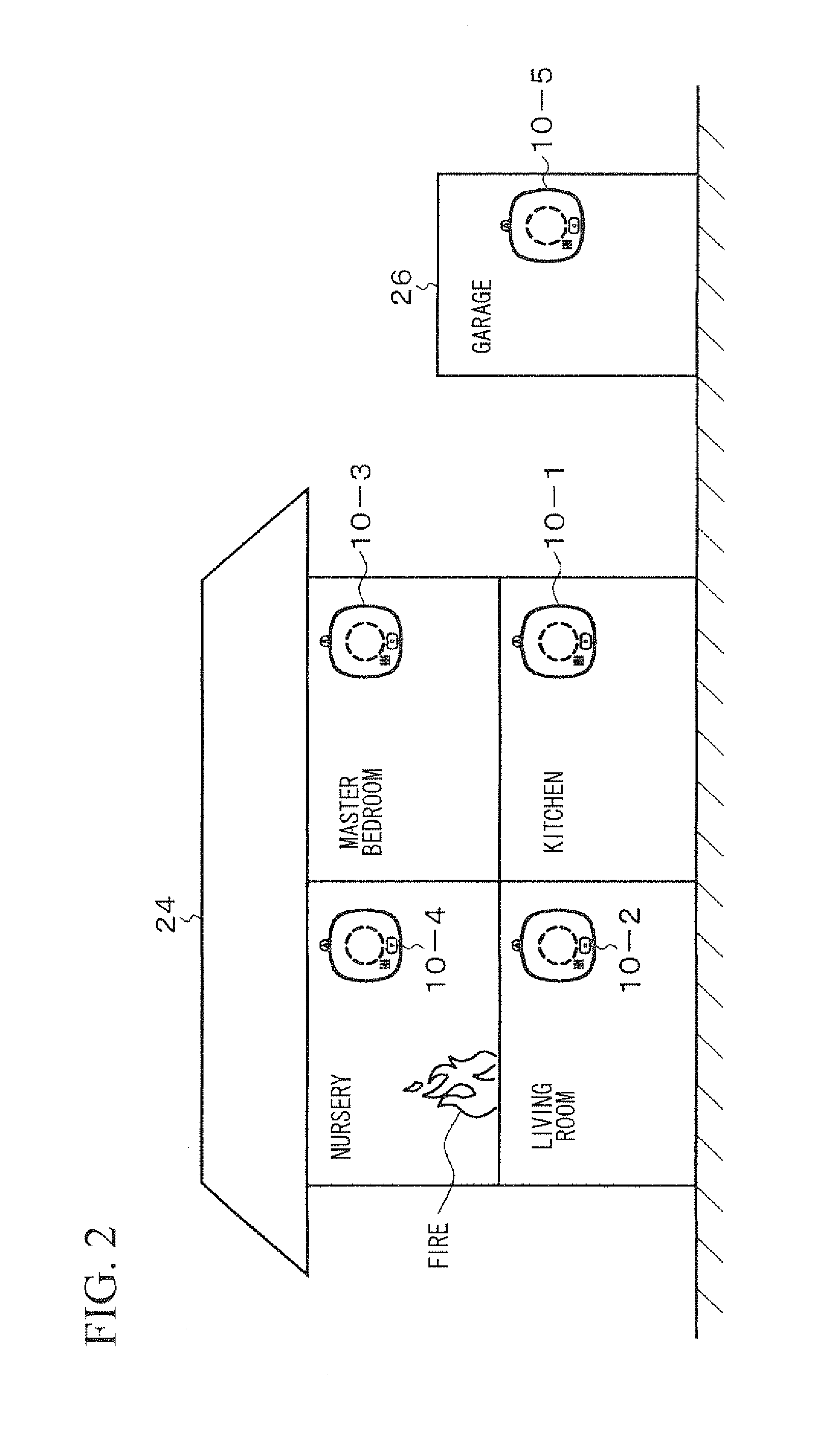Alarm device
a technology of alarm device and alarm head, which is applied in the direction of fire alarm, electric transmission signalling system, instruments, etc., can solve the problems of increasing costs, preventing the security of a stable communication environment, and a chance to spread of fire or other problems
- Summary
- Abstract
- Description
- Claims
- Application Information
AI Technical Summary
Benefits of technology
Problems solved by technology
Method used
Image
Examples
first embodiment
[0124]FIG. 1A and FIG. 1B are explanatory drawings showing the outward appearance of a wireless alarm device according to a first embodiment of the present invention, wherein FIG 1A is a front view and FIG. 1B a side view.
[0125]As shown in FIG. 1A and FIG. 1B, an alarm device 10 of the present embodiment comprises a cover 12 and a main unit 14. At the center of the cover 12, a smoke detector section 16, with openings through which smoke can enter formed around the periphery, is disposed, which detects a fire when smoke from the fire reaches a predetermined concentration.
[0126]At the lower left side of the smoke detector section 16, a sound hole 18 is provided. A speaker (not shown in the drawing) is housed behind this such that an audible alarm or voice message can be output. Underneath the smoke detector section 16, an alarm stop switch 20 is provided. The alarm stop switch 20 also functions as a test switch.
[0127]Inside the alarm stop switch 20, an LED 22 is installed as illustrat...
second embodiment
[0181]FIG. 8 shows an alarm device according to a second embodiment of the present invention, as a front view of an alarm device comprising a signal strength display section.
[0182]The construction of the alarm device 10 in FIG. 8 is fundamentally the same as the construction of the first embodiment, but in the present embodiment, a signal strength display section 64 is added to the right side of the cover 12. As the signal strength display section 64, a small scale LCD unit is used, which displays an antenna symbol next to a bar graph of three bars whose respective lengths indicate a weak, moderate, or strong signal strength. The display in the figure corresponds to a strong signal strength, where three bars are displayed. When the signal strength is moderate, the bar graph displays only the smaller two bars, and when the signal strength is weak only the smallest bar is displayed. In addition, in the event of abnormal communication, the bar graph display disappears, leaving only the...
third embodiment
[0189]FIG. 9A and FIG. 9B are explanatory drawings showing the outward appearance of a wireless alarm device according to a third embodiment of the present invention, wherein FIG. 9A is a front view and FIG. 9B a side view.
[0190]As shown in FIG. 9A and FIG. 9B, an alarm device 110 of the present embodiment comprises a cover 112 and a main unit 114. At the center of the cover 112, a smoke detector section 116, with openings through which smoke can enter formed around the periphery, is disposed, which detects a fire when smoke from the fire reaches a predetermined concentration.
[0191]At the lower left side of the smoke detector section 116 provided in the cover 112, a sound hole 118 is provided. A speaker (not shown in the drawing) is housed behind this such that an audible alarm or voice message can be output. Underneath the smoke detector section 116, an alarm stop switch 120 is provided. The alarm stop switch 120 also functions as a test switch.
[0192]Inside the alarm stop switch 12...
PUM
 Login to View More
Login to View More Abstract
Description
Claims
Application Information
 Login to View More
Login to View More - R&D
- Intellectual Property
- Life Sciences
- Materials
- Tech Scout
- Unparalleled Data Quality
- Higher Quality Content
- 60% Fewer Hallucinations
Browse by: Latest US Patents, China's latest patents, Technical Efficacy Thesaurus, Application Domain, Technology Topic, Popular Technical Reports.
© 2025 PatSnap. All rights reserved.Legal|Privacy policy|Modern Slavery Act Transparency Statement|Sitemap|About US| Contact US: help@patsnap.com



